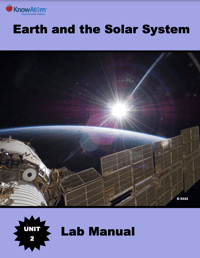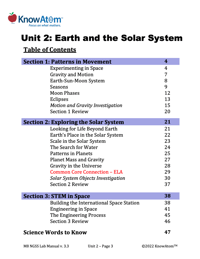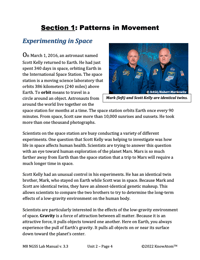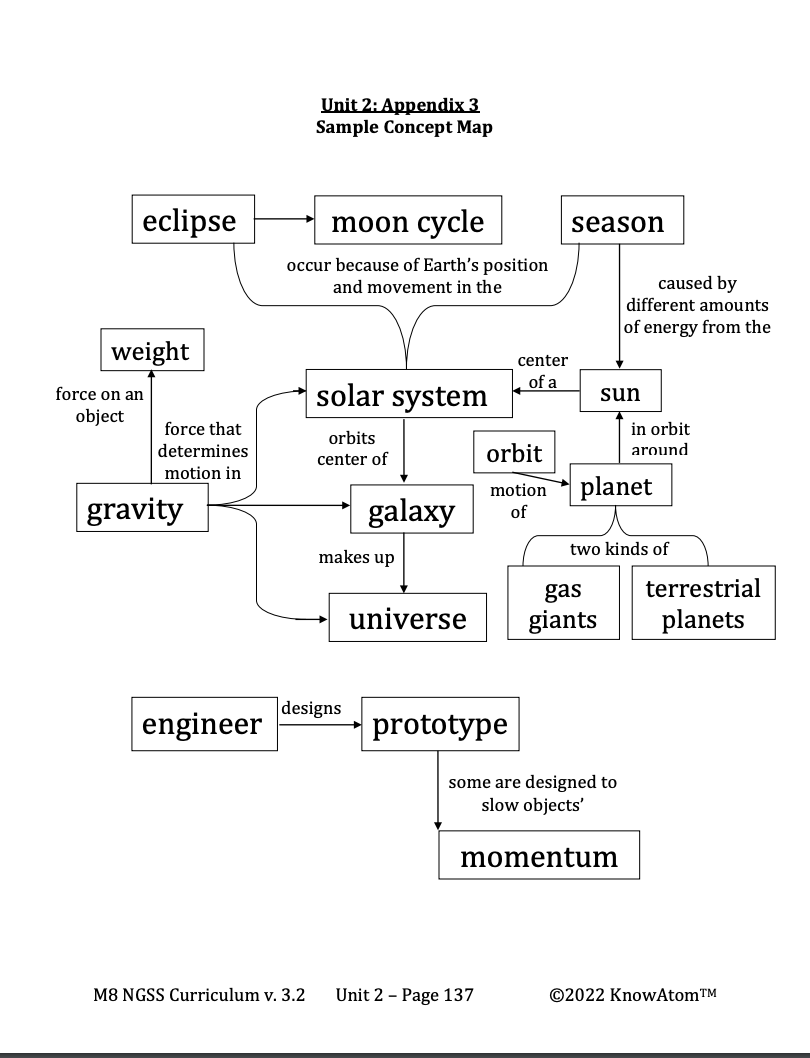Science background provides teachers with more in-depth information about the phenomena students explore. Below is an excerpt of the science background on the Earth-sun-moon system.
Earth’s Gravity
Scientists are particularly interested in how the low-gravity environment of the International Space Station affects the human body over time. Gravity is a force of attraction between all matter. Because it is an attractive force, it pulls objects together.
All matter has gravity, but the strength of gravity depends on an object’s mass. The more massive an object is, the more its gravity will pull on other objects and cause them to move. Earth is so massive that here on Earth, Earth’s gravity pulls everything on or near the surface down toward the planet’s center.
There is much less gravity on the space station than on Earth. This affects many aspects of the human body, including muscle mass. On Earth, we have to use our muscles just to stand up against the downward pull of gravity. This requires our bodies to maintain enough muscle to support our own weight. In the low-gravity environment of space, astronauts lose muscle since it is not required to support their weight. To counter this, astronauts have to exercise regularly. Earth’s gravity extends beyond its surface. Because gravity is an attractive force, scientists refer to the area around an object where another object will feel the gravitational force of the first object as an object’s gravitational field.
Earth is so massive that its gravitational field extends beyond Earth to the International Space Station and the moon. Because both of these objects are within the gravitational field, Earth’s gravity pulls down on them.
Gravity and Orbital Motion
Because of Earth’s gravitational pull, the space station and the moon are both constantly falling toward Earth's surface. However, they don’t crash into Earth because they are also in motion, traveling sideways at approximately 90 degrees to the force of gravity. Because of this, the moon and the space station keep falling toward Earth’s surface but never hit it.
If Earth’s gravitational field didn’t exist, the space station and the moon would travel in a straight line because of inertia (the tendency of an object in motion to stay in motion unless acted upon by an outside force). But because Earth’s gravitational field is so strong, its attractive force changes the motion of the objects around it to an orbit around it. To orbit means to travel in a circle around an object.
Picture a ball on the end of a string. If you swing the string around, the ball is constantly being pulled toward your hand, just as Earth’s gravity pulls objects into orbit around it. But the ball’s sideways motion around the string keeps it moving so it doesn’t fall to the center. Without that pull to the center—for example if you let go of the string—the ball would go flying off in a straight line away from you.
Earth-Moon-Sun System
As the moon and the space station orbit Earth, Earth itself is in motion, orbiting the sun. The sun is so much more massive than Earth that more than one million Earths could fit inside the sun. Because of this, the sun’s gravitational field pulls Earth into orbit around it.
The space station and the moon orbit Earth and not the sun because the force of gravity becomes weaker as the distance between two objects increases. The moon and the space station are much closer to Earth than they are to the sun, so Earth’s gravity is the dominant force on them.
As Earth orbits the sun and the moon orbits Earth, these three objects form a system because they interact with one another. Remember that a system is a set of connected, interacting parts that form a more complex whole.
The moon orbits Earth and Earth orbits the sun in a regular, predictable way. It takes the moon 29.5 days to complete one orbit around Earth, equal to one month. And it takes Earth 365 days to complete one orbit around the sun, equal to one year.








